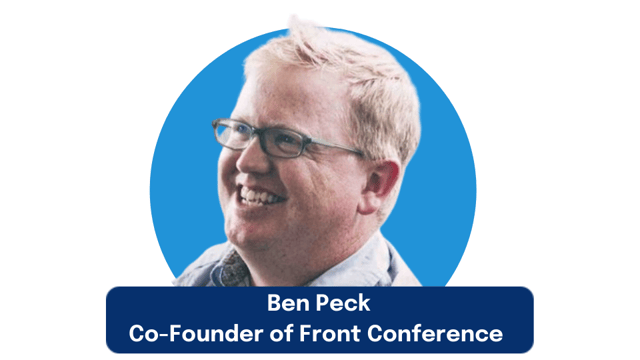Human-Centered Design is Product Management

Ben Peck, Co-Founder of Front Conference and former Director of Product Design at Jane.com, shares show how human-centered design can help product managers build better products, and how to get to market faster.
Ben is the Founder of Front Conference, one of the product management industry’s premier conferences and communities. He’s grown the community from 20 to over 4,500 members in just a few years, and the most recent Front conference had over 800 attendees!
Prior to Front, Ben was Director of Product Design at Jane.com, a two-sided marketplace for clothes, where he lead a human-centred product design department.
I started the interview by asking Ben to explain what human-centered design is.
He says that human-centered design is about understanding how humans use your product, not just how you think they use your product. Product managers often conflate what they think users need with what they actually need, or how they think users will use their product with how they actually use it. However, there’s often a gap between expectations and actual user behavior.
Human-centered design humans into the product development process. Ben does this by utilizing a variety of quantitative and qualitative research techniques.
Ben applies different research techniques depending on the product or feature that he’s working on. He differentiates between innovation stories and evolution stories.
Innovation stories are brand new. Users have never seen or experienced them. There aren’t competing products or features on the market. Therefore, to successfully build an innovation story requires changing the user’s mindset.
Evolution stories improve upon something that already exists. You can learn from competitors or your existing users.
For evolution stories, Ben relies more on quantitative analytics research. He observes how users are currently using his product.
On the other hand, for innovation stories, Ben relies more on qualitative discovery research. He seeks to discover needs and opportunities.
Ben also shares how he ships features to small groups of users so that he can learn how they actually use the feature, and then iterate if necessary, before rolling out the feature to a larger group of users.
You’ll learn a lot from this episode about user research, community building, and iteration.
Here are the highlights:
- Ben defines human centered design (5:16)
- How constraints can lead to better research and products (6:44)
- Ben shares his best user research techniques (10:38)
- Ben discusses how he applies human-centered design to growing his community (21:05)

Subscribe now!
Get our new reports, case studies, podcasts, articles and events
